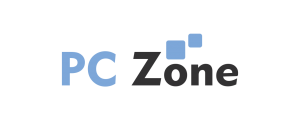Knowledge of Digital Accessibility
Digital accessibility develops accessible digital environments and products so that persons with various impairments may utilize the service, product, or function.
According to the Americans with Disabilities Act (ADA), which the US Congress passed in 1990, people with sensory, cognitive, and physical impairments or disabilities must be allowed to enter both public and private spaces. The ADA now includes assistive or adaptive digital accessibility technology.
You may be asking what this implies for your company and how you can secure digital accessibility. QualityLogic helps businesses adapt to digitally accessible technology. Because we have over 30 years of quality assurance experience, we are the firm to call.
Regulations Concerning Electronic Accessibility
The US Department of Justice (DOJ) continues to think that the ADA encompasses digital accessibility and has not formally extended ADA requirements to accommodate digital accessibility as of this writing.
However, additional legislation can be viewed via the lens of digital accessibility. Section 508 of the Rehabilitation Act of 1973 requires government departments and agencies to reasonably deliver information to individuals with disabilities through accessible methods. If they are unable to do so, they must provide alternate access ways for individuals with disabilities to the data and information that these information systems provide. Individuals with disabilities must have equal access to people without disabilities.
In 2010, the Communications Act of 1934 was updated by the 21st Century Communications and Video Accessibility Act (CCVA), which established additional requirements to guarantee that contemporary technology is accessible to people with impairments. The bill’s Title I defines standards for “advanced” telecommunications goods and services, while Title II establishes standards for TVs, television services, television programs, and streaming video.
The European Union introduced its own regulation in 2016, with the introduction of Directive (EU) 2016/2102, standardizing accessibility requirements across the EU. A directive is a piece of European Union legislation that mandates a certain aim while leaving the means of achieving it to the member states.
Digital Accessibility Examples
Examples of typical digital accessibility on a well-designed website include the following products:
Screen readers and other assistive technology cannot understand images on displays, but their alternative text can. Every visual feature, such as the opportunity to see an image’s description or the text added to it, must have a full-text equivalent. This is useful for flowcharts, schematics, graphs, maps, menu buttons, infographics, and explanation-based presentations.
As long as a person with a handicap has access to a keyboard, they can navigate using the keyboard instead of the mouse. On a completely keyboard-accessible website, tabs should be utilized to move logically and consistently between sections, menus, form fields, links, and other content areas.
In addition to aesthetics, page headers are vital for navigation and information organization. True header elements should be coded into the headers, and the information should be structured and shown in a legible and intelligible manner.
Links may be challenging for all users, disabled or not, due to factors such as the color of the connecting light. One of the most critical things for all users is a solid connection. In reading aids, readers usually seek identifiable correlations. However, they only sometimes emerge. Three factors are required for a successful link:
- Readability, which includes utilizing standard language and including the URL.
- The substance of the link is revealed via clarity.
- Uniqueness separates the link from other information in the body text by providing a description.
To ensure a consistent user experience, all pages on a website should have the same or equivalent designs, layouts, and navigation buttons (UX). Users may explore a website with greater confidence, knowing that their experience will be consistent and error-free. It is vital to employ consistent iconography and control components, as well as to provide repeat navigation links, including skip links, on each page.
How Disabled People Use Online Content
Individuals with various impairments experience substantial difficulties browsing digital material. For the blind or visually challenged, text-to-speech software may be necessary. For persons who are deaf or hard of hearing, audio and video content may require transcripts or captions. For people with cognitive impairments, the issue may need to be explained. People with physical limitations may also require material that may be accessed via different input devices, such as switches or eye-gaze sensors. By keeping these diverse criteria in mind, website designers and developers may build digital material that is accessible to a broader audience.
When Creating Content, Keep Those With Visual Impairments in Mind
When it comes to digital information, it is vital to remember that only some interaction with the environment in the same manner. Those with little or no eyesight, for example, must rely on a number of signals to comprehend information. Before exposing youngsters to digital content, certain measures must be followed. Every image, for example, requires a slew of written subtitles. Videos must also offer audio explanations and closed captions. By following these guidelines, you can guarantee that everyone has access to your digital data.
Create Content With the Deaf and Hard of Hearing in Mind
When generating digital material, it is vital to consider the demands of all possible viewers. People with impairments may find it difficult to absorb traditional types of material. Closed captioning allows hard-of-hearing and deaf persons to view digital information.
There are various aspects to consider while developing digital content with closed captioning. The captions must, first and foremost, be readable and intelligible. This means using big letter sizes and avoiding fonts with elaborate patterns that may be difficult to read. Audio and captions must also be delivered on time. Subtitles can be generated manually or automatically by the software that transcribes the audio recording. Finally, double-check the captions for any mistakes.
By following these criteria, it is feasible to develop digital information that is accessible to individuals of all abilities. Closed captioning is one approach for making your material more accessible; audio description and sign language interpretation are two more. If you examine their tastes, you may produce digital content that appeals to all audiences.
Summary
Anybody who visits your website must have digital access to your digital material. If you have any queries or would like more information about our services, please visit www.qualitylogic.com. We can’t wait to assist you in making your website more accessible to all users.





